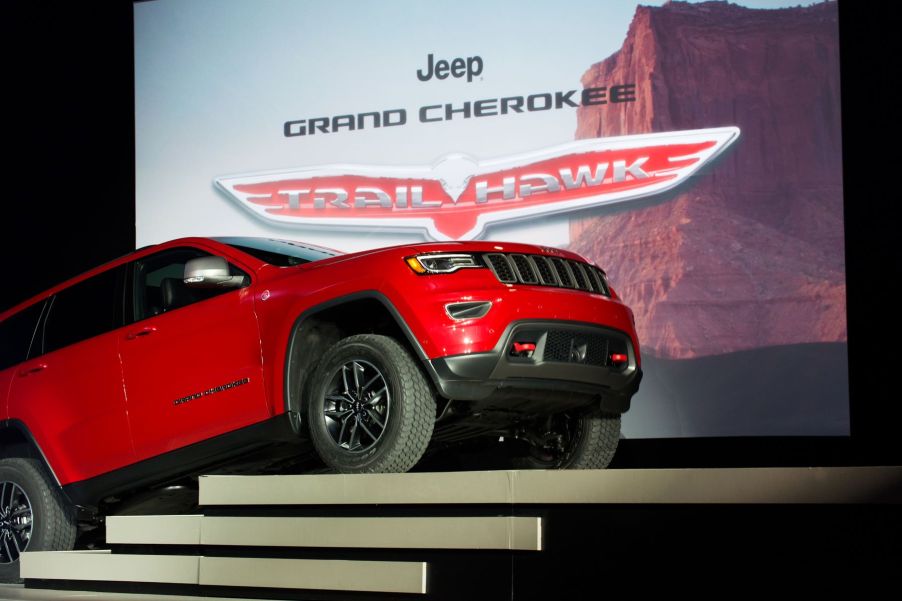
Jeep Grand Cherokee Stuck in Tunnel Proves the Limits of Off-Road Driving
The Jeep brand is one of the world’s most iconic off-road vehicles in history, especially the Wrangler model. Of course, the famous Jeep Grand Cherokee has its own place among the legends, with owners turning them into formidable rock climbers. Its abilities are deeply rooted in the history of the United States, with production beginning in 1941 for the U.S. military during World War II. Back then, it was known as the Willys MB, and the model was further made famous in the television show Cheers.
In 1945, a civilian version of that iconic four-wheel drive model that once stormed the beaches during World War II rolled off the assembly line. While good for trekking through the backwoods, crossing the occasional shallow creek and climbing steep rocky hills, they’re not magic carpets. Nonetheless, Jeep owners frequently get their Wrangler, or Grand Cherokee stuck in the darndest places — places even the military didn’t take the Willys MB.
The Jeep models most heavily pitched as ‘all-terrain’

Jeep offers a lineup of “all-weather-capable” vehicles featuring state-of-the-art 4×4 systems. The cheapest has a starting MSRP of $29,070 for the entry-level Wrangler and $27,455 for the entry-level Cherokee. The Wrangler 4xe PHEV has a starting MSRP of $51,025 while the Grand Cherokee $34,970. The 2021 Cherokee comes in nine different trims, with the High Altitude being the top trim model on the lineup. Under the luxurious High Altitude, you have the Trailhawk, which plenty of off-road enthusiasts feel offers the best mix of daily commuter and off-roading toy.
The 2021 Jeep Cherokee Trailhawk starts at MSRP $37,825 before adding any additional packages. Nevertheless, it offers fairly decent standard options for the starting price. The powertrain is supported by a 3.2-liter V6 engine, dual overhead camshafts, as well as high-flow intakes and exhaust ports. The standard engine also features variable valve timing (VVT), which alters the timing of a valve lift event to improve fuel economy while preserving performance.
The Trailhawk’s powertrain is paired with a four-wheel drive and nine-speed automatic transmission, including “an engine torque management system that provides full-throttle launches, quick upshifts and responsive downshifts,” according to Jeep. Of course, an off-road suspension package comes standard.
Tracks are for trollies, not your Grand Cherokee
Automotive website Jalopnik published an article on August 16, 2021, reporting that a “Trolley service in Philadelphia was interrupted over the weekend after a Jeep Grand Cherokee was discovered inside a tunnel that’s usually reserved for the trolley cars. Employees with the Southeastern Pennsylvania Transportation Authority found the Jeep early on Saturday, around 05:00 a.m., and it took SEPTA crews a couple of hours to pull it out of the tunnel, per local reports.”
While the interruption to trolley service was relatively short, all things considered, authorities haven’t publically stated the identity of the driver and/or owner of the fourth-generation Jeep Grand Cherokee. Furthermore, investigators with the Southeastern Pennsylvania Transportation Authority (SEPTA) don’t know why someone would attempt to drive the Jeep Cherokee down a trolley tunnel. Whatever their reasons, one must give the Cherokee its due props for making it as far as it did — as can be observed in the tweet posted by SEPTA.
Still, the SUV failed where a 4WD Jeep Cherokee Trailhawk may very well have dominated — which means you wouldn’t be reading this informative yet entertaining article.
What’s the difference between AWD and 4WD models?
Dealerships and mechanics have sort of a bad habit of grouping AWD and 4WD vehicles into a single category. So, it’s not the fault of buyers for doing the same thing. However, it’s important to understand that they shouldn’t be lumped together and their differences because it’ll make a difference when you are trying to decide what type of SUV or truck fits your daily needs.
A four-wheel-drive system engages all four wheels, hence the term “4WD.” This is why it’s common to see vehicles marketed as off-road and baring 4WD decals. Four-wheel-drive transmissions have the engine’s power split between all four wheels using a transfer case, allowing the vehicle maximum torque for rugged terrain. Contrarily, all-wheel drive vehicles have split the engine’s power between the wheels using three differentials. As a result, the wheels receive power at various rates depending on the road conditions or terrain.
This is why Jeep offers “all-weather” AWD vehicles — they work best by helping drivers maintain control of their vehicle if they enter a skid. However, they’re not designed to handle too rough of a surface for off-road adventures.


